After a minor panic that our trip might be curtailed, surprisingly the Phnom Penh border security staff didn’t seem too bothered about coronavirus. We weren’t asked where we’d been or required to complete any medical screening. We did have our temperature measured before being allowed to board our flight in. Although that was Vietnam Airlines policy, nothing to do with Cambodia.

But, we were in – and that dark cloud had been lifted! Or at least it had for the time being. Speaking of clouds, we were growing to like this business of not needing to check the weather forecast before going out each day. Our biggest concern (apart from the virus) was how hot it would be. And the answer: usually very. We had managed to acquire a few face masks during our time in South East Asia, but wearing them in the heat of the day was suffocating.
With COVID-19 firmly on our radar, we decided it would be a good idea to get a local sim card to keep up to date. This also gave us the ability to better negotiate taxi fares via the Grab app. At £5 a month, it paid for itself almost immediately.
Bassac Lane
Nearby our hotel was Bassac Lane, an unsuspecting but gentrified short street lined with high end pubs and eateries. Much to our entertainment, we felt like we had arrived at the real life SoDoSoPa (for any South Park fans reading).
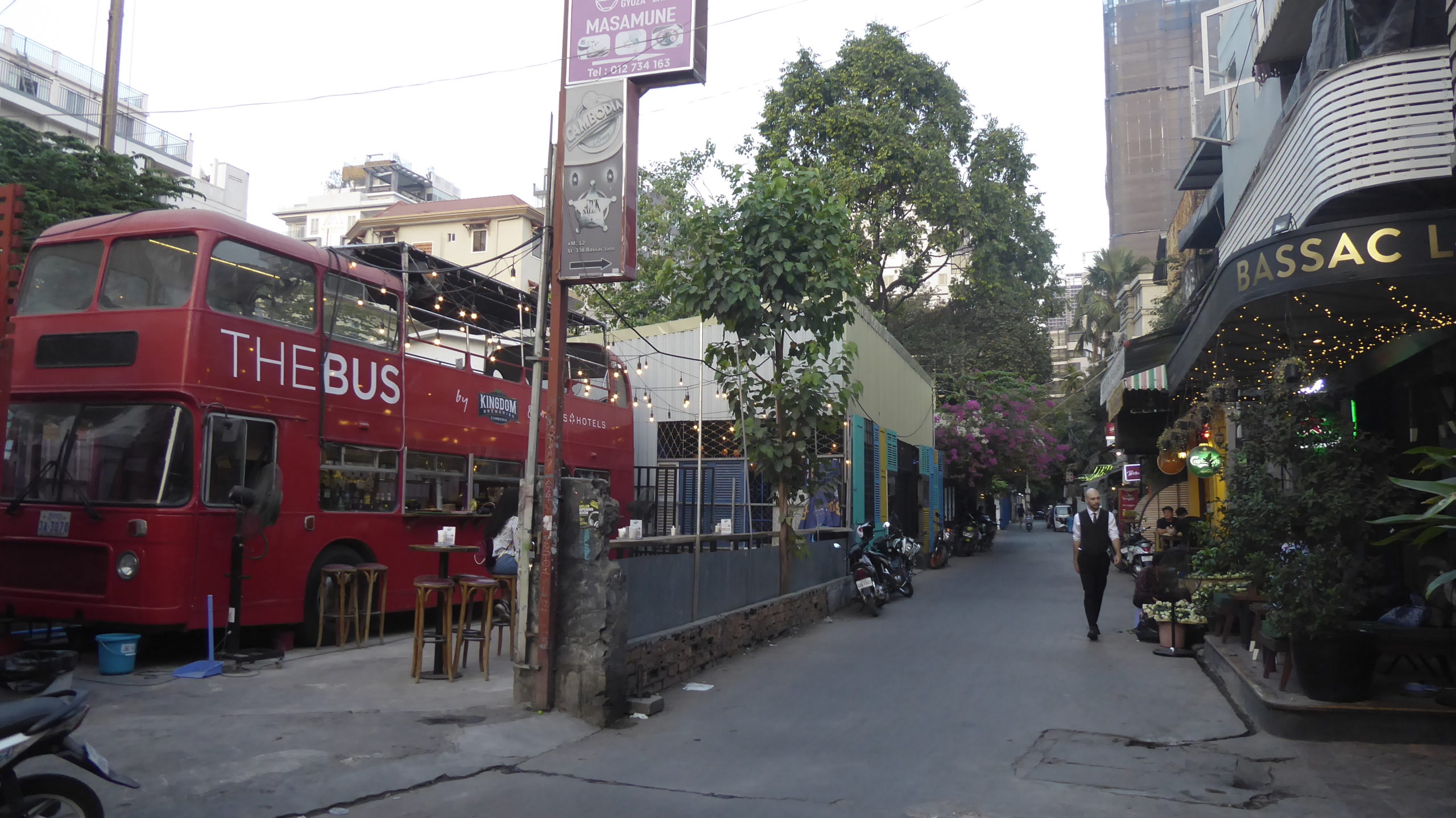
Wat Phnom
Situated atop a small hill, Wat Phnom (from which the city gets its name) was our first stop the following day. The temple itself was pretty and peaceful, surrounded by a small but lovely park.

Perhaps more notable were the long lines of tuk tuks skirting around the large roundabout that encompasses the hill. It was sad to see the line at a complete standstill, with drivers offering preposterously low rates just to try and get some business. We were offered a $1 fare to take us to a cafe for lunch, wait for us, then drive around 2km to another attraction.
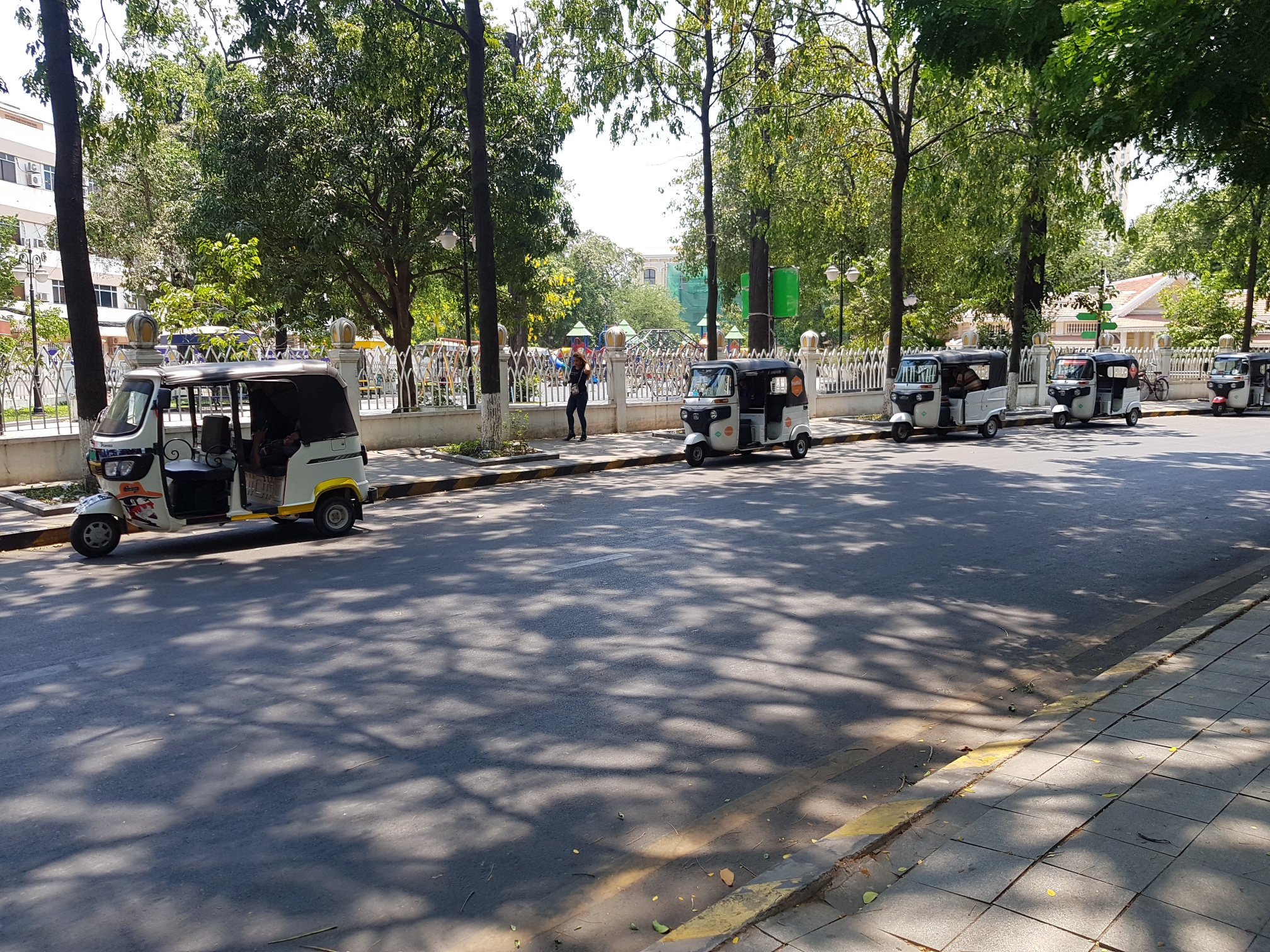
Central Market
Central Market, offering all sorts of goods, was next on our agenda. We intended to get lunch there, but after a short walk around this didn’t feel like a wise move. The market served fairly standard looking street food, nothing too bad. What really put us off though, were the various live animals at a few of the stalls… Seeing those we decided it best to keep our distance and eat elsewhere. It’s was 39 degrees and we’d been on our feet for a couple of hours, so we were praying for somewhere air conditioned. After walking several streets, we resorted to Google Maps for a recommendation. KFC 160m away? Thank you Colonal Sanders, that’ll do!
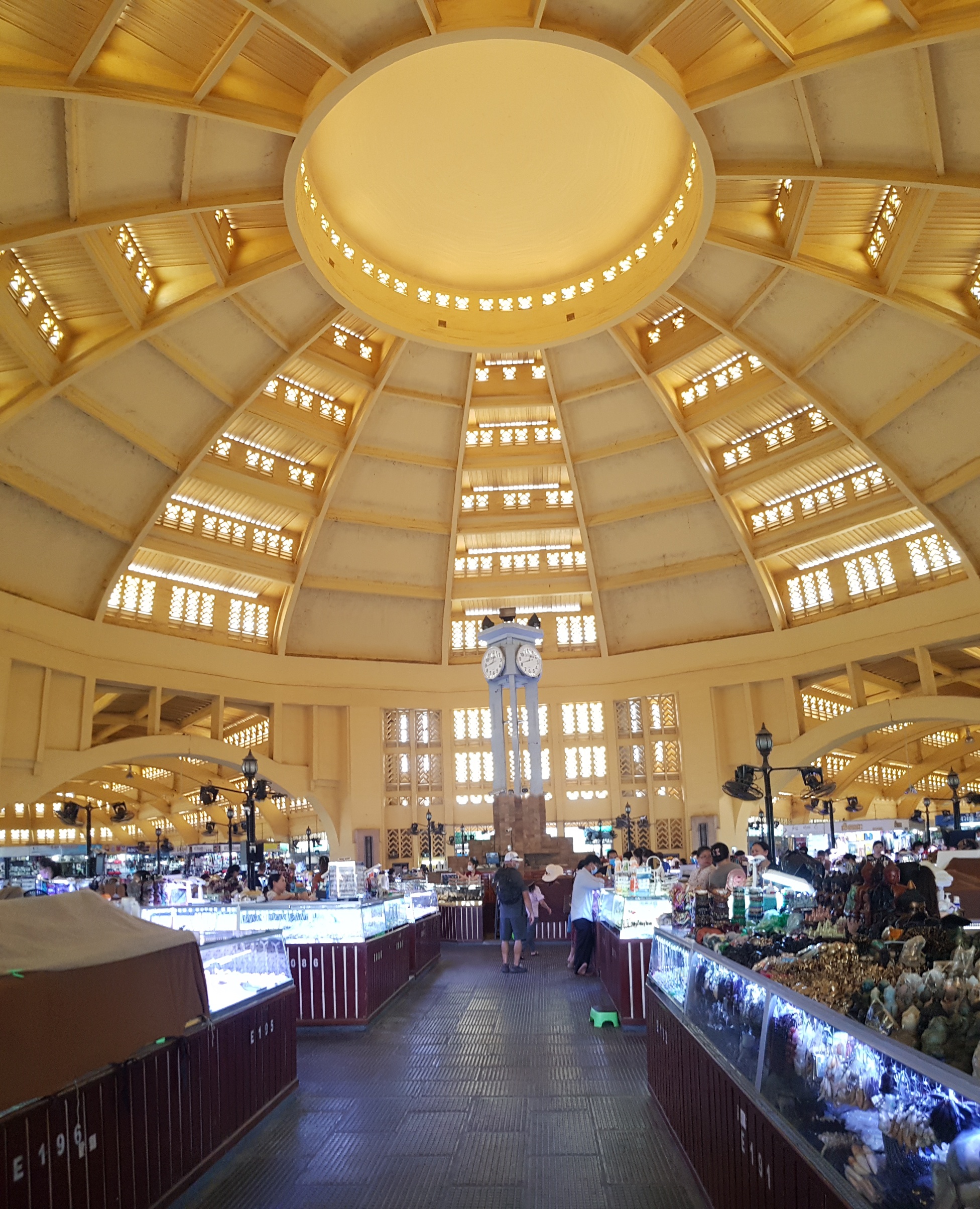
Royal Palace
After lunch it was time for a visit to the Royal Palace. Despite a tuk tuk driver’s best efforts to convince us that it was closed (and that he could take us to somewhere better), we made it inside.
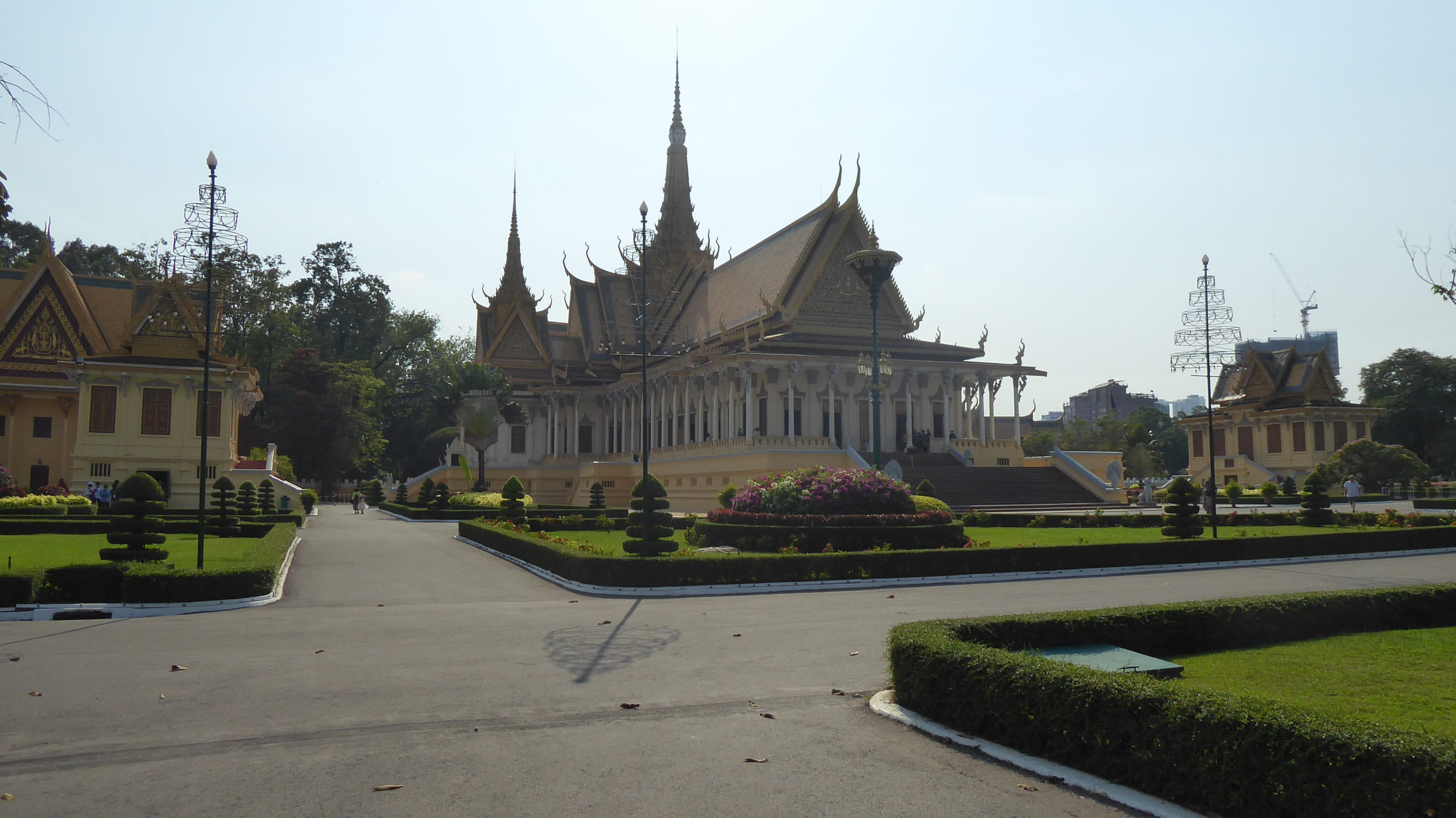
Compared to Bangkok’s Grand Palace, this wasn’t nearly as elaborate. A fair portion of the buildings were undergoing renovations as well. We were beginning to think that 10 dollars was a bit steep for entry. But it still had some charm.
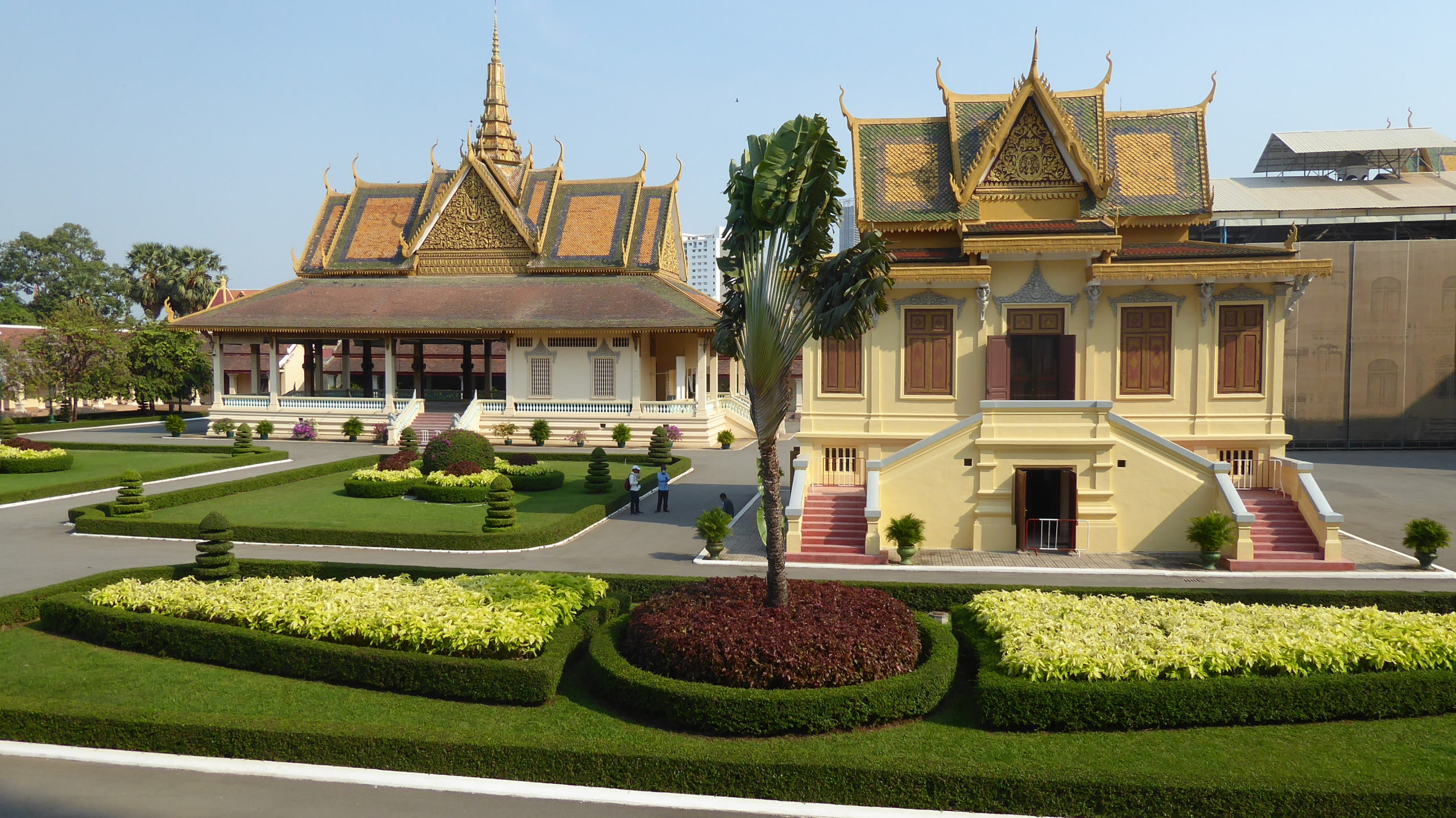
However, we were a bit disappointed by the ‘Silver Stupa’. Maybe it was our eyes, but it definitely looked like more of a dull concrete grey!
Dinner at Mok Mony
To make up for our Western lunch, we had a traditional Cambodian meal for dinner. We chose a well rated nearby restaurant called Mok Mony and ate the restaurant’s famous beef stuffed Betel leaves for starters, on the recommendation of the owner. Then for mains, Mariya had ‘crab and fish amok’ and James took a caramelized soy sauce stir fry. We hadn’t planned to take dessert, but we got chatting to the owner who insisted we were given a complimentary mango sticky rice. This ended up being the best we had tried as well.
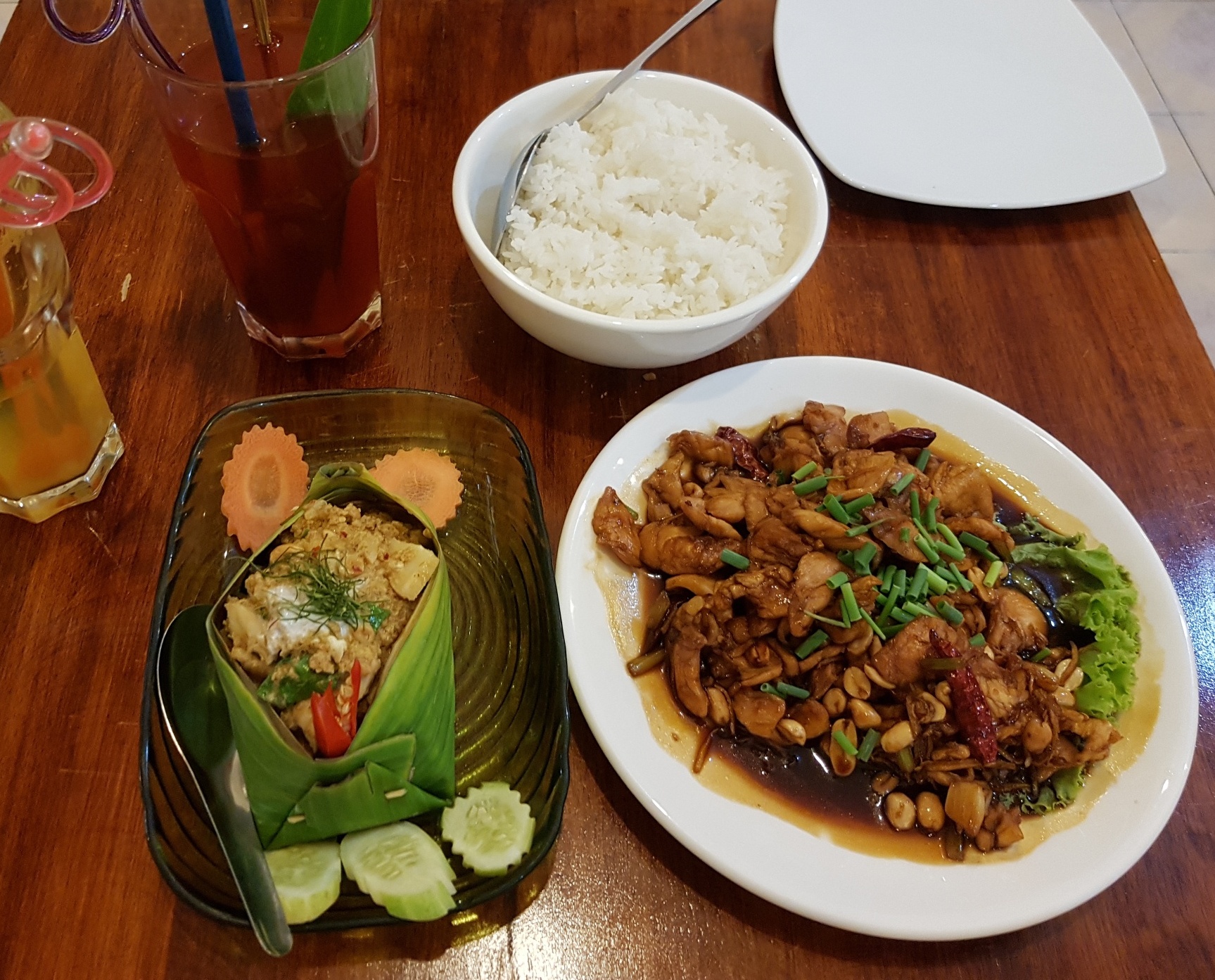
The restaurant was called Mok Mony and as we learned from the owner, the story of its inception is inspiring. We won’t go into the details, but after a turbulent period in his life the owner met the chef while spending some time in Cambodia. Until they met she had been a petrol station attendant, the fumes from which were taking a toll on her health. She lived in a tiny room with her entire family, but nonetheless offered to cook for him. In fact, she made him the same starter we had eaten – and the taste blew him away. He called her crazy Mony, or ‘Mok Mony’, for wasting her talent and after some deliberation he offered to open a restaurant in her name.

He would provide her family better accommodation, a decent wage and a share in the business, in return for her becoming his chef and using her wages to save up for a house of her own. She agreed and within a few months business was booming. We would 100% recommend eating there to anyone visiting Phnom Penh. Great food, great cause and to top it off they give all leftovers to the local homeless population each night. Truly inspirational.
S21 – Tuol Sleng Genocide Museum
We don’t tend to visit many museums when we travel, but to learn more about some of Cambodia’s darker history we spent our final afternoon in Phnom Penh at Tuol Sleng Genocide Museum, also known as S21 prison. Formerly a prestigious high school, in 1975 the Khmer Rouge converted it to a prison, though it was more of a torture camp. In the relatively short time it was operational, estimates have it that upto 20,000 people were detained here.
Twelve survived.

The basic ideology of the Khmer Rouge was that a natural life farming without modern tools was good, and that big cities were bad. Consequently, in a matter of days nearly all inhabitants of Phnom Penh were forcibly removed from their homes. Intellectuals, doctors, foreigners, even children were perceived as a threat. So they were all arrested and taken to prison blindfolded. Once there, the dehumanisation process began by being stripped naked on entry. Inmates were then tortured several times per day until they ‘confessed’ to imaginary wrongdoings and gave up the names of ‘associates’ before ultimately being killed.

Of course there’s much more to it, but that’s the basic gist of what happened under the Khmer Rouge. S21 was only one of around 200 similar prisons in the country. The regime brutally tortured and killed a quarter of Cambodia’s population in under 4 years. As a result, 50% of Cambodians today are under 25 and less than 10% are over 50. It’s shocking to think that this all took place in secret so recently.
Night Market
By the end of our visit to S21 we were in a stunned silence. It was hard to imagine how the local people cope, considering that every single person in the country has a direct connection to the genocide. The only way we could think to clear our minds was to take a visit to the Night market. The atmosphere was jovial, with live music and an abundance of food. Visiting was also a great opportunity for us to purchase some new outfits.

Many travellers skip Phnom Penh entirely when visiting Cambodia. Especially if they’ve already seen some of South East Asia’s other big cities. But if nothing else, it’s worth visiting to gain some insight and appreciation for the history that these resilient people have faced.

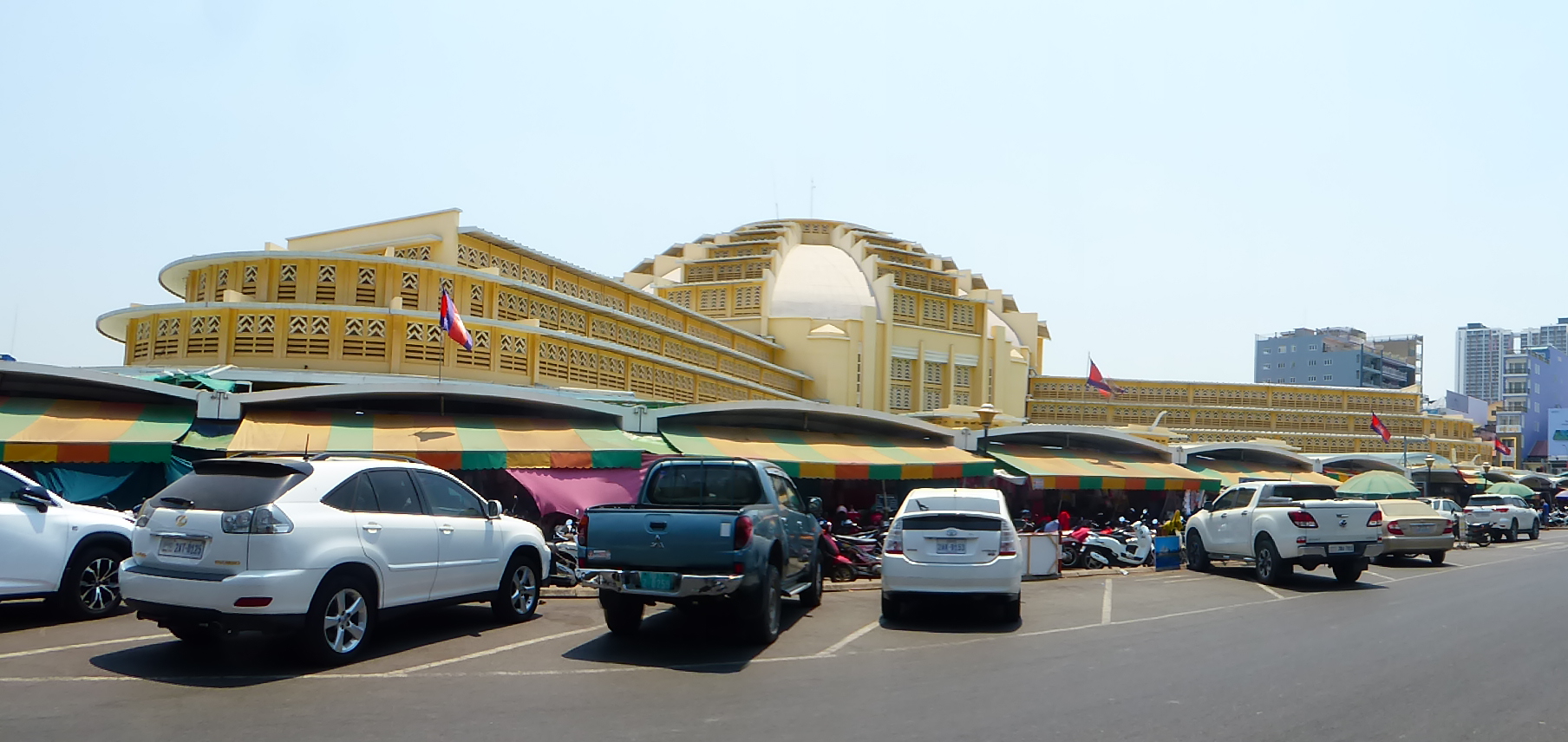
Hi guys,
Glad to see you’re enjoying your travels and that you’re both still safe and well. It’s been great reading your last few posts and reminiscing over that places we’ve been to as well. I’d completely forgotten about Buddha Park and the giant pumpkin! Though it seems to be a lot quieter that when we were there which is such a shame for the local residents.
We didn’t make it to Costa Rica as the Foreign office stopped all travel outside of the UK an hour before we were due to board the place. Bit gutted, but in hindsight think it was for the best as I don’t think we would have been allowed to move around the country.
Stay safe and make sure you try all the fruit whilst you’re out there….manogosteens and rambutans are my fav.
Ah it’s such a pity you couldn’t get to Costa Rica… Unfortunately, the border closure drama escalated very quickly and we are now doing our final updates from home. For full details you can see our final 2 posts – Koh Rong Sanloem and Siem Reap (still in the making). It was very sad to see the impact that the lack of tourism was having on all local residents…